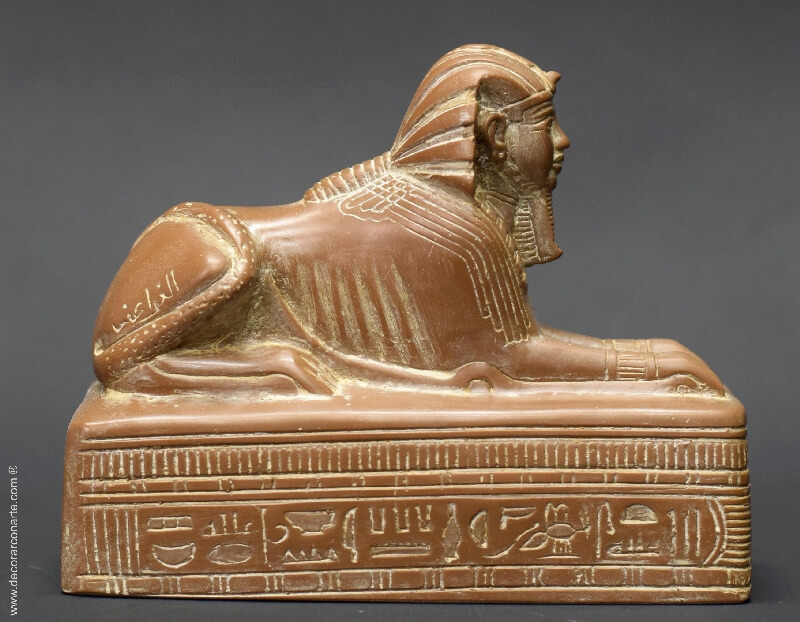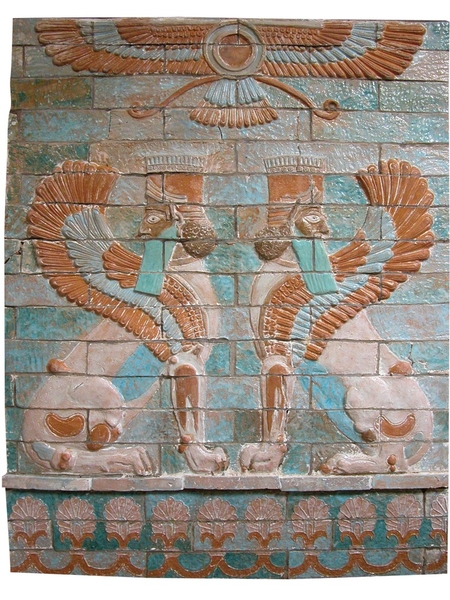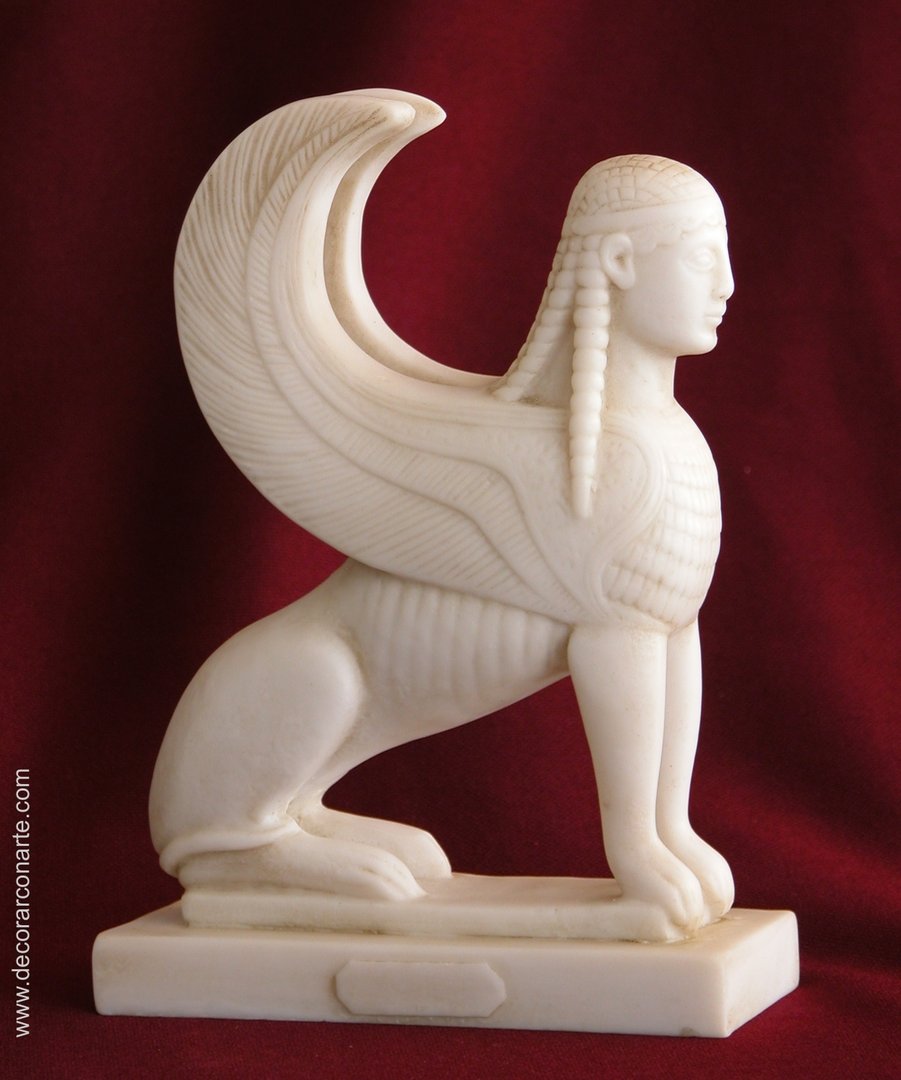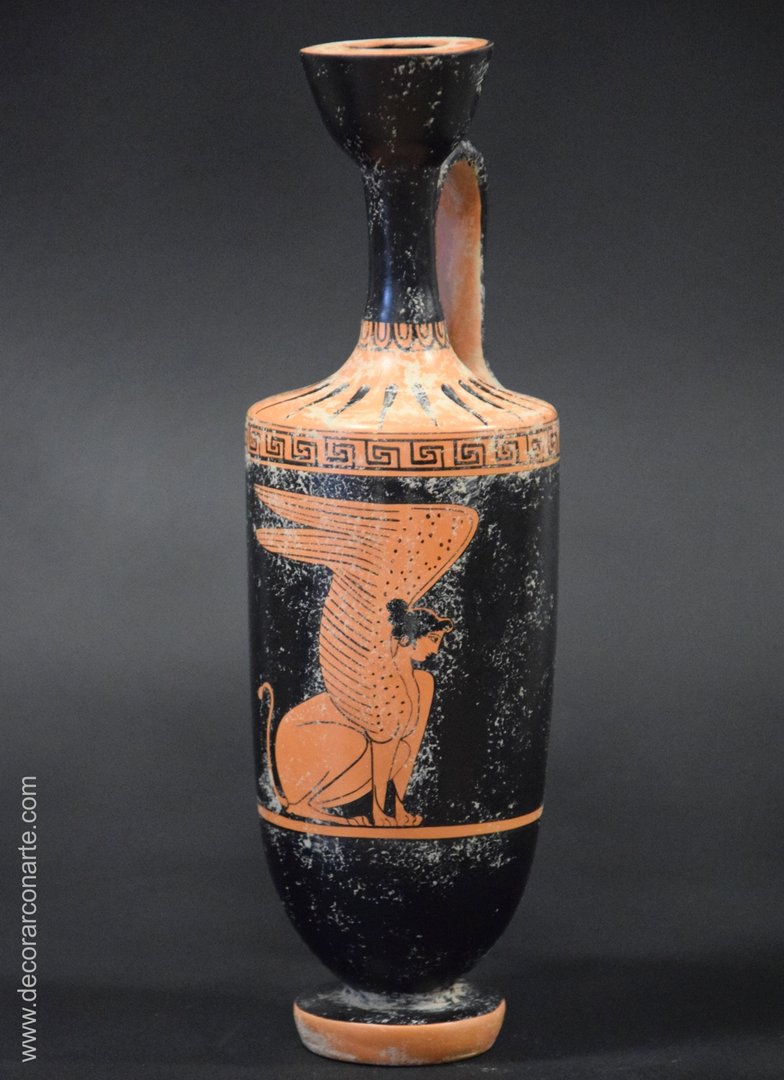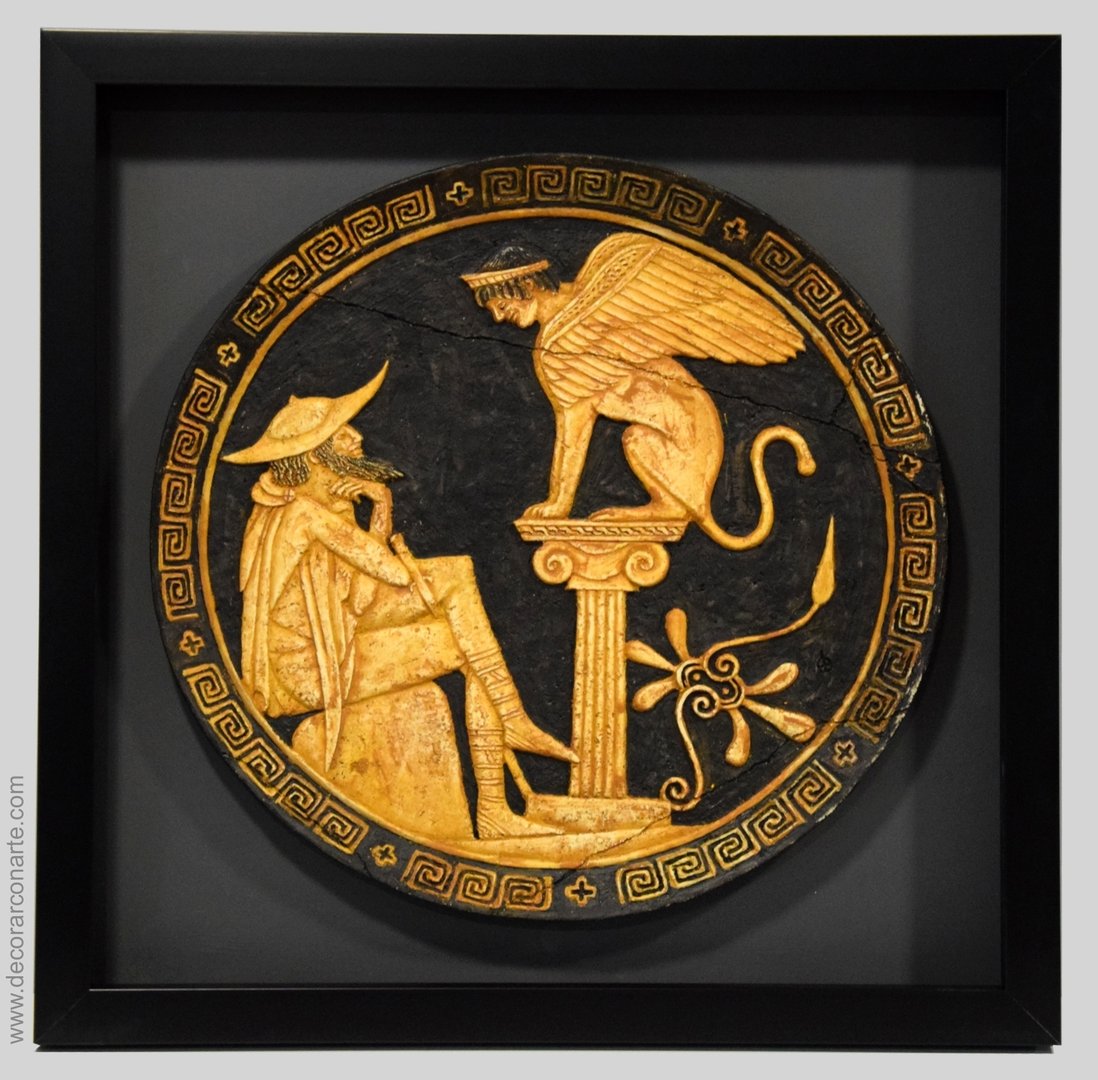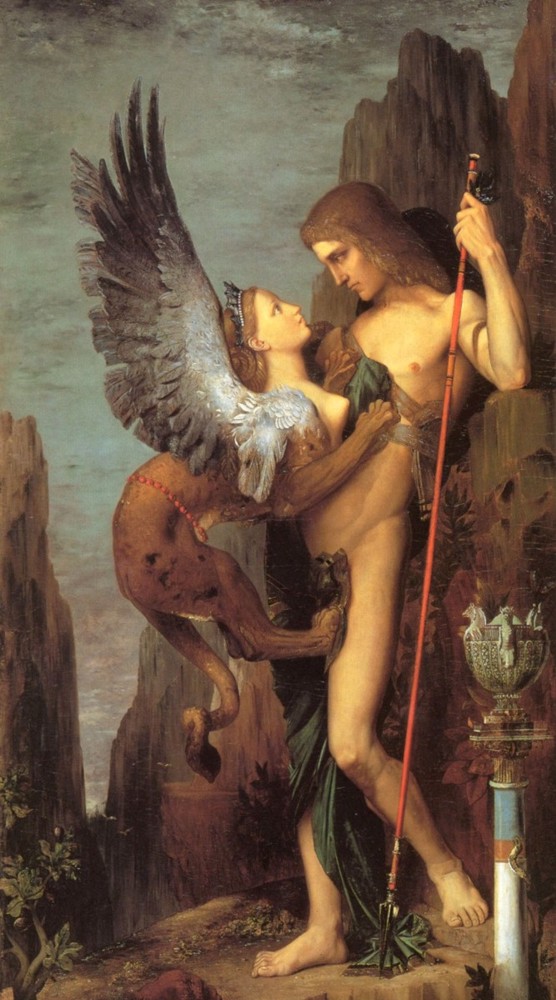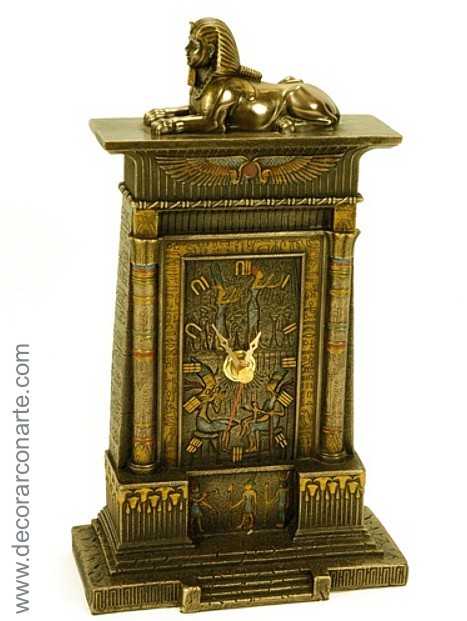The symbol of the sphinx has been with us for at least 4,500 years, probably longer. This mythological being with the body of a lion and a human head is associated with enigma and mystery, and in both Greece and Egypt it took on the role of guardian, especially of the doors and thresholds of sacred enclosures, just like other Mesopotamian figures, the lammasu, large statues with the head of a bearded man, wings and the body of a lion or bull.
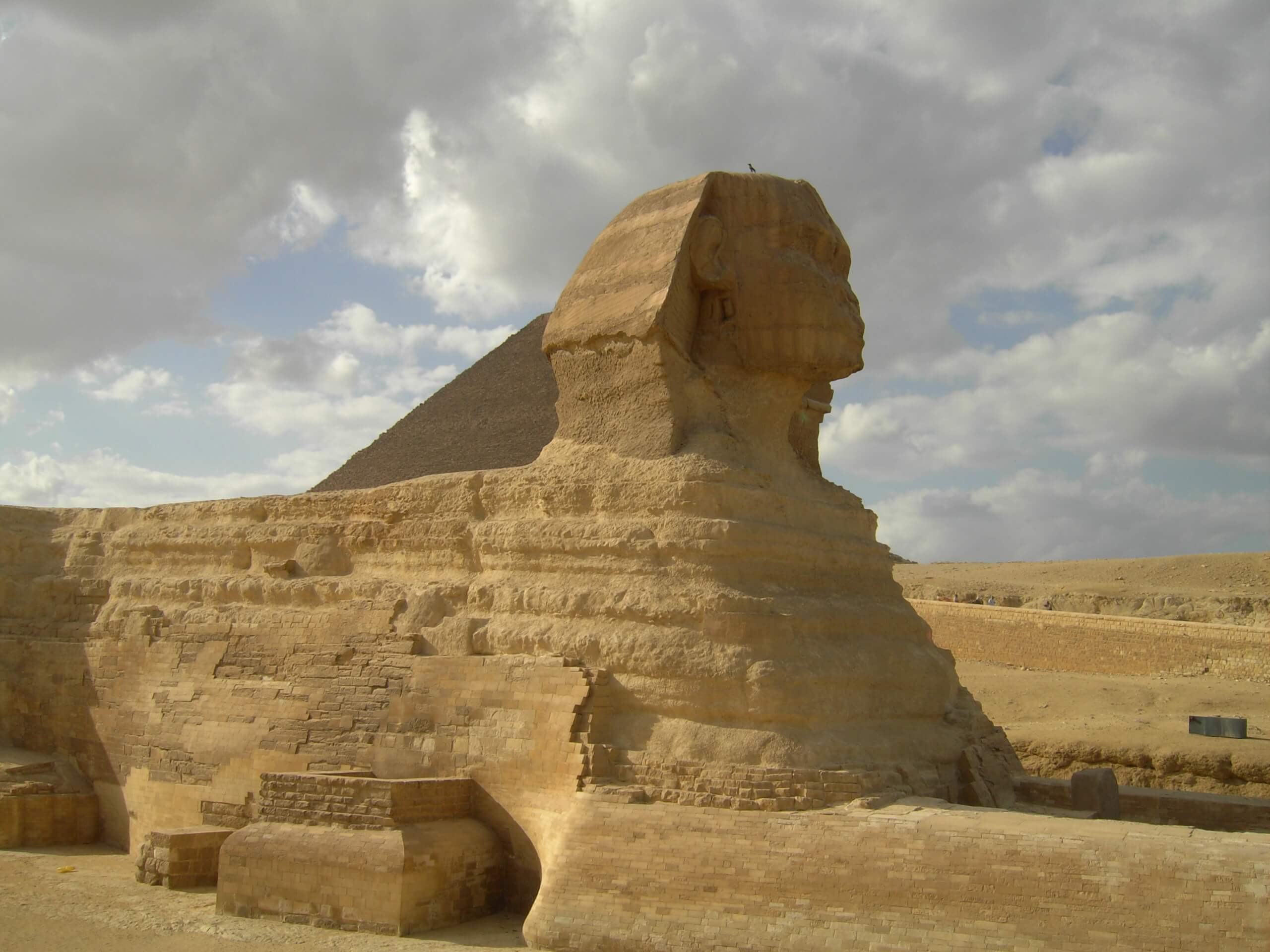
The most famous and probably the oldest is the Great Sphinx on the Giza plateau, attributed to King Chephren (c. 2550-2525) of the 4th Dynasty, Ancient Empire. Twenty metres high and 73 m long, it was carved directly into a limestone mound. An inscription between its legs, erected by a later king, Thutmose IV (1400 BC), tells how the Sphinx appeared to him in a dream, presenting herself as Ra-Atum Horakhti (Sun on the Horizon) and promising him the throne in exchange for freeing her from the sand that covered her (at that time only her head was showing).
Egyptian kings were often depicted with the body of a lion, and rows of sphinxes were placed flanking the ceremonial road at the entrance to the temples.
The Sphinx in Greece appears as a dangerous and evil being, which devoured the unwary who were unable to solve its riddle, as in the Oedipus myth.
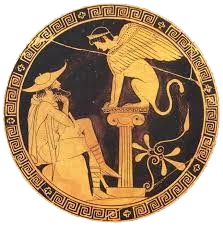
In another key, it is interpreted as the symbol of the human being who has conquered his animal part of instincts and lower passions, in opposition to the beings with the body of a man and the head of an animal, such as the Minotaur, which represents the bestialised human being.
Here you have a sample of our catalogue where you can buy sculptures, bas-reliefs and ceramics with the theme of the Sphinx:
Sphinx. 14 cm. See in shop:: Bas-relief. Mesopotamian Sphinx, left. 49,5 x 33 cm. See in shop: Bas-relief. Mesopotamian sphinx, right 49.5 x 33 cm. See in shop: Ceramic mural. Ahura Mazda. 124 x 100 x 5 cm. See in shop: Hittite two-headed sphinx. 14 cm. See in shop: Sphinx of the Higuerones. 11 cm. See in shop: Winged Sphinx figure. 17,5 x 13,5 cm. See in shop: Sphinx of Naxos. 87 cm. See in shop: Sphinx of Naxos. 39 x 29 x 9 cm. See in shop: Lecito, Sphinx. Greek ceramic. 14 cm. See in shop: Lecito. Greek pottery. Sphinx. 28 cm. See in shop: Bas-relief. Oedipus and Sphinx. 56 cm. See in shop: Oedipus and the Sphinx. Canvas by Moreau (1826-1898). See in shop: Clock with the Egyptian Sphinx. 24 cm. See in shop: Pair of Sphinxes. 120 x 51 x 85 cm. See in shop: Statue of Sphinx. 66 x 27 x 83 cm. See in shop: Pair of sphinxes. 38x129x77cm. See in shop:

